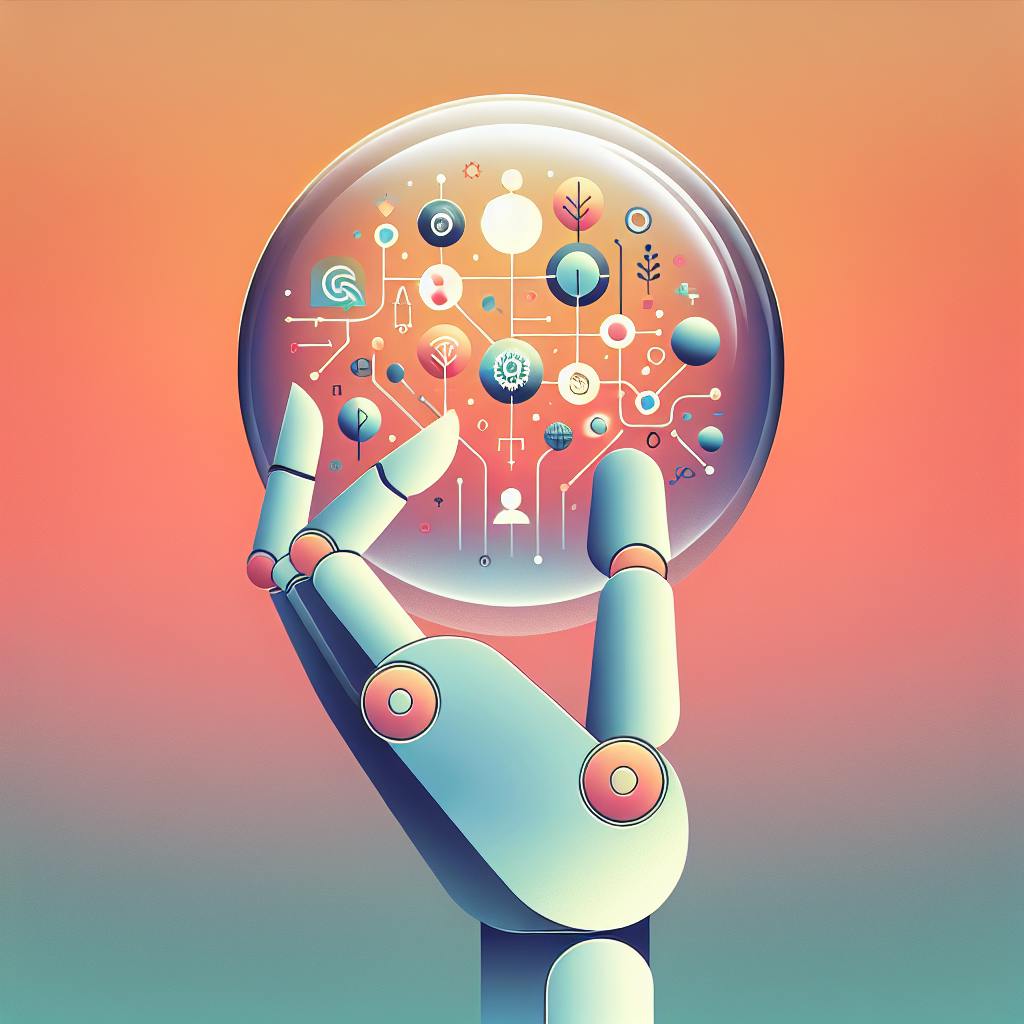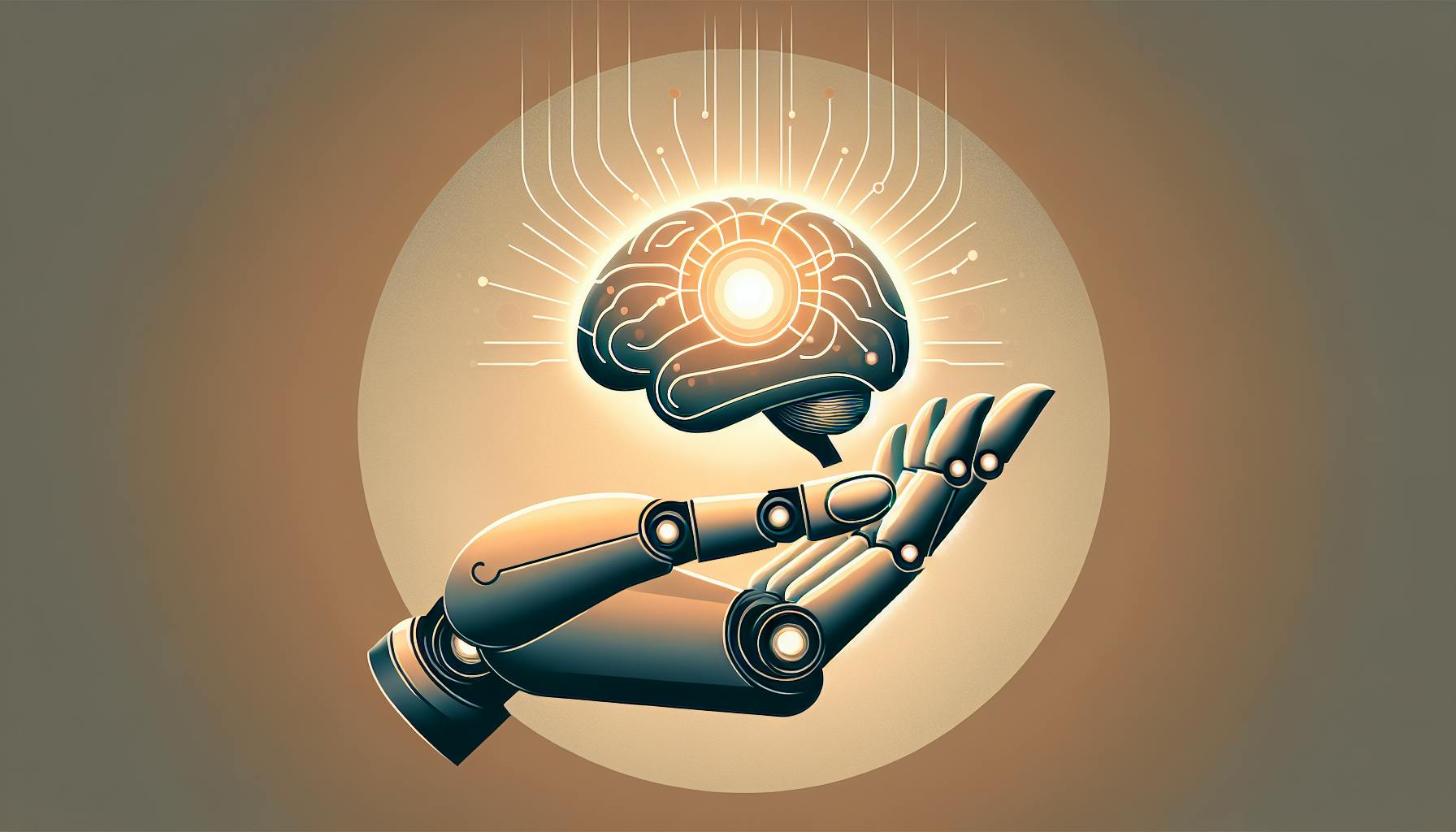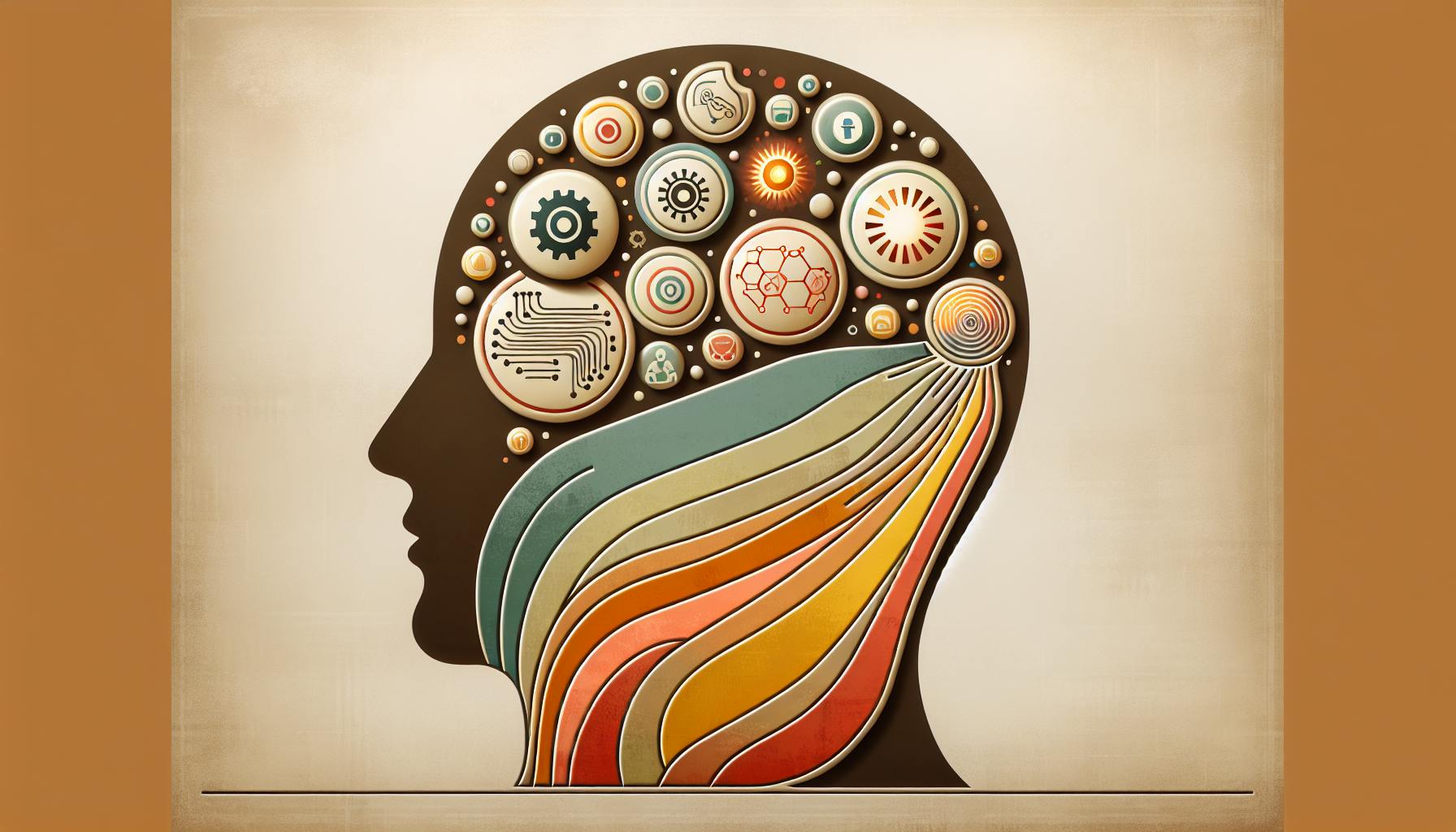ChatGPT burst onto the scene in late 2022 and immediately captured global attention with its ability to generate remarkably human-like text. Developed by AI research company Anthropic to be helpful, harmless, and honest, ChatGPT demonstrates the rapid progress in large language models over recent years.
With its conversational interface and broad knowledge base, ChatGPT has opened up exciting new possibilities for how AI could augment human capabilities across diverse industries and roles. While still an early stage technology, it provides a glimpse into how AI assistants may one day transform how we work and live.
But moving beyond the hype, what are the most promising real-world applications of ChatGPT today? Where can it have the biggest impact right now in enhancing productivity and creativity across sectors?
In this post, we'll explore some of the most impactful current and emerging use cases of ChatGPT across industries like marketing, customer service, software development, business operations, healthcare, education, finance, law, human resources, and more.
Marketing and Content Creation
ChatGPT has tremendous potential to augment human marketing teams in creating high-quality, personalized content at scale.
Some of the key applications include:
- Generating initial drafts of marketing copy for ads, emails, social media posts, and other formats that closely match a brand's voice and tone. For example, an outdoor equipment company used ChatGPT to quickly ideate catchy slogans and taglines for an upcoming campaign centered around their new hiking boots product line.
- Creating SEO-optimized website pages, blog posts, and long-form guide content targeted to rank for specific keywords. The AI can rapidly research and produce posts optimized for search. Outdoor retailer REI improved their content operations by using ChatGPT to draft detailed guides on national park hiking trails that ranked well for park-related keywords.
- Producing video scripts, presentations, and other multimedia content based on high-level messaging guidance from humans. An automotive company used ChatGPT to generate scripts for YouTube review videos showcasing the key features and selling points of new car models. The AI created scripts tailored to mirror the tone of their most popular video creators.
- Analyzing customer data to extract insights and recommend optimized content messaging for different user segments. A SaaS company analyzed their user demographics and interests data with ChatGPT to create personalized website content that addressed the pain points of each customer profile.
- Automating lead nurturing and sales prospecting by drafting personalized outreach messages at scale. An enterprise sales team used ChatGPT to introduce their services via email to prospects, integrating details from LinkedIn to make initial outreaches more custom and human.
Email Marketing
For email marketing, ChatGPT has proven adept at:
- Personalizing cold outreach and follow-up emails while maintaining brand voice. Fabletics used ChatGPT to craft customized product recommendations in their drip campaigns that matched the athletic preferences and sizing data of each subscriber.
- Optimizing the messaging, offers, and structure of automated email sequences and newsletters. Software company ConvertKit analyzed past email performance data with ChatGPT to improve email subject lines and preview text for higher open rates.
- Drafting promotions, announcements, and other email content aligned with broader campaign goals and audience interests. Nonprofit charity Charity:Water used ChatGPT to generate email copy tailored to different donor segments focused on improving water access in developing countries.
- A/B testing different email subject lines and preview text optimized for higher open and clickthrough rates. HubSpot leveraged ChatGPT to rapidly ideate and test email subject line variations for their most popular lead nurturing sequences.
- Providing relevant cross-sell or upsell recommendations based on historical customer data and product catalogs. Retailer Everlane increased revenue from post-purchase emails by using ChatGPT to recommend complementary products tailored to what each customer previously bought.
SEO and Website Content
To bolster SEO and website content production, ChatGPT excels at:
- Producing well-researched website pages and blog articles optimized for target keywords. Social media platform Buffer used ChatGPT to create SEO-friendly blog posts ranking for terms like "social media analytics" and "Instagram strategy".
- Conducting keyword research to identify high-value search queries to target. WordPress hosting provider WP Engine had ChatGPT analyze their top performing articles to uncover new keyword opportunities related to site speed, security, and scalability.
- Generating SEO-friendly meta descriptions and titles. Marketing agency SearchPilot improved clickthrough rates by 15% on a client's blog by having ChatGPT generate meta descriptions personalized to each post.
- Creating long-form, in-depth guides and tutorials on complex topics to attract search traffic. VPN service NordVPN used ChatGPT to draft exhaustive technical guides on topics like "router configuration" and "firewall setup" that ranked well and built domain authority.
- Optimizing content for featured snippet opportunities and voice search queries. An online learning platform optimized their courses content for featured snippets on Google by having ChatGPT re-work section introductions to be more concise with key details up front.
Social Media Management
For streamlining social media management, ChatGPT can assist with:
- Creating initial drafts of social posts and captions tailored to each platform's style and audience. Social media scheduling tool Later used ChatGPT to generate an initial month of highly customized Instagram captions for their various brand accounts that still needed human review before posting.
- Monitoring brand mentions, comments, and engagement across social channels. Software company Hubspot built a ChatGPT-powered social listening tool that alerts their marketing team to spikes in brand sentiment or relevant viral posts.
- Responding to customers and managing PR crises based on past conversational data. Fabletics programmed ChatGPT to monitor direct messages and comments across social platforms. The AI provides templated responses for common inquiries and alerts agents for anything requiring human intervention.
- Analyzing audience demographics, interests, and personalities on each platform. Fintech startup Chime analyzed Twitter bios and posts with ChatGPT to better understand their younger target audience interested in mobile banking and money management.
- Generating short-form video and image content optimized for social engagement. Pet food company The Farmer's Dog used ChatGPT to craft social captions and adapt blog post titles into engaging text overlays for Instagram Reels.
Customer Service and Support
ChatGPT presents game-changing potential to automate customer support and augment human agents.
Key applications in this realm include:
- Providing 24/7 automated assistance for common customer queries via chat or messaging. Home improvement retailer Home Depot uses a ChatGPT integration on their website to answer straightforward DIY questions from customers without having to staff live support around the clock.
- Troubleshooting technical issues based on product knowledge and past resolutions data. Software company Zendesk built an AI-powered conversational chatbot leveraging ChatGPT to resolve common customer tickets automatically based on support history.
- Handling routine support tasks like returns, refunds, and account changes. Clothing ecommerce site Everlane programmed ChatGPT to process sales returns and exchanges via their online chat channel, including creating prepaid return shipping labels for customers.
- Proactively finding relevant help center articles to resolve customer issues. Gaming company Xbox trained a ChatGPT bot to recommend help documentation to customers based on query analysis, lowering time to resolution.
- Seamlessly escalating complex issues to human agents when needed. Fintech company Stripe created a hybrid system with ChatGPT handling common billing questions, while automatically transferring low balance alerts to human reps for delicate handling.
Chat and Messaging
For customer messaging, ChatGPT has proven it can:
- Deliver real-time chatbot assistance on websites, mobile apps, and messaging platforms. Shopify merchants can install the AI Support Assistant app to provide instant ChatGPT-powered responses to customers directly on storefronts.
- Answer common questions and FAQs to quickly resolve issues autonomously. Cloud data platform Snowflake uses a ChatGPT chatbot to field and answer simple product questions without agent assistance to boost productivity.
- Guide customers to relevant help articles, tutorials, and documentation. Microsoft's GitHub now leverages ChatGPT to recommend developer documentation based on user queries, lowering time-to-resolution for common issues.
- Capture key support data like account details upfront for faster resolution. Parcel delivery service UPS directs customers to a ChatGPT-powered chatbot that first collects shipment tracking numbers before looking up status.
- Smoothly transfer chats to human agents when needed. Remote work platform Deel trained a hybrid chatbot to determine when a customer issue requires escalation to a human representative based on conversational cues.
Knowledge Management
To optimize knowledge management, ChatGPT has demonstrated strengths in:
- Generating and maintaining comprehensive customer knowledge bases. Software company HubSpot used ChatGPT to build out initial versions of internal wikis and documentation for training new customer support reps.
- Recommending help articles related to the user's question for quick answers. Meal kit company HelloFresh developed an AI assistant that serves up relevant help articles to customer questions, with a 75% answer rate without human agents.
- Identifying content gaps from customer questions to improve coverage. Online learning platform Udemy analyzes common student support questions with ChatGPT to uncover topics lacking documentation for their professors.
- Creating new tutorials and documentation from common user issues. Apple used insights from their support tickets to have ChatGPT generate FAQs and user manuals covering pain points around using AirPods and other new products.
- Optimizing knowledge base article SEO through keyword research. Startup HelpScout improved search visibility of their internal knowledge base by using ChatGPT to optimize article titles and content for search queries.
Customer Analytics
ChatGPT is adept at enhancing customer analytics by:
- Analyzing interaction data to uncover pain points and opportunities. D2C razor brand Harry's had ChatGPT review customer support conversations to identify product improvements users were requesting most frequently.
- Identifying trends in support requests to improve products and services. Software company Atlassian used ChatGPT to analyze spikes in customer tickets around billing and account management issues, leading to simplifications to their pricing plans.
- Segmenting users based on attributes and behaviors for targeted outreach. Wireless provider Mint Mobile had ChatGPT analyze their account data to create customer segments for specialized retention campaigns for high-value users.
- Applying machine learning to interaction data to predict churn risk. Music streaming app Spotify developed an AI system with ChatGPT to analyze in-app behaviors that correlate with users likely to cancel subscriptions.
- Translating insights into actions to optimize customer experience. ChatGPT helped ecommerce company Wayfair comb through user data to overhaul their shipping cost communication based on pain points uncovered in post-purchase surveys.
Software Development and Coding
ChatGPT has exciting implications for accelerating software development workflows.
Key applications in coding include:
- Writing code snippets to automate common programming tasks. ChatGPT can generate scripts to rename files, merge CSVs, read APIs, etc. For example:
import os
import csv
# Loop through all files in directory and add .txt extension
for filename in os.listdir('.'):
if not filename.endswith('.txt'):
new_name = filename + '.txt'
os.rename(filename, new_name)
# Merge contents of all CSV files into one combined CSV
with open('combined.csv', 'w') as outfile:
for fname in os.listdir('.'):
if fname.endswith('.csv'):
with open(fname) as infile:
outfile.write(infile.read())
- Translating product requirements and specifications into technical designs. ChatGPT can produce UI flows, system architecture diagrams, data models, and other technical documentation to elaborate on high-level product specs.
- Generating boilerplate code, templates, and scaffolds for standard features. Rather than manually configuring backends from scratch, ChatGPT can provide a starting codebase for login systems, databases, APIs, and more.
- Documenting code using natural language summaries of logic and architecture. ChatGPT is adept at analyzing codebases and explaining their structure and functionality in plain terms for non-technical stakeholders.
- Debugging errors by explaining code functionality in layman-friendly language. Developers can copy-paste error messages into ChatGPT to get explanations of root causes in easy to grasp terminology.
Collaboration and Documentation
For improving collaboration and documentation, ChatGPT has proven it can:
- Produce technical overviews of codebases explaining logic, architecture, and processes in plain terms. Fintech startup Rippling used this to quickly create documentation for new engineering hires to ramp up.
- Write user guides, API documentation, tutorials, and release notes. Twilio used ChatGPT to draft API reference documentation and sample code to highlight new features in their client SDKs.
- Summarize code changes and new features in easy-to-understand language for non-technical stakeholders. ChatGPT enabled GitLab to auto-generate release notes for product managers by condensing commit messages and ticket descriptions into summaries.
- Answer developer questions by providing explanations in beginner-friendly terms. Programming community Stack Overflow is piloting ChatGPT for responding to common coding questions with simplified, conversational explanations.
- Translate business requirements into software specifications and user stories. Enterprises like Capital One have used ChatGPT to craft technical specifications from product requirements to hand off for development teams.
Front-End Development
To boost front-end development, ChatGPT excels at:
- Converting designs, mockups, and wireframes into HTML, CSS, and JavaScript. Design firms like Ideo are experimenting with using ChatGPT to translate UI/UX prototypes into production-ready frontend code.
- Reviewing user interfaces and recommending optimizations for usability, accessibility, and design best practices. ChatGPT can analyze webapp interfaces and suggest improvements following platforms' interface guidelines.
- Generating responsive layouts and UI components from design specs. ChatGPT can mock up mobile-friendly and adaptive layouts tailored to provided creative direction.
- Writing reusable React components complete with logic and custom hooks. Developers can describe component behavior and have ChatGPT generate React implementations handling state management.
- Implementing web performance best practices like lazy loading, image optimization, minification. If directed, ChatGPT can build web app code optimized for fast loading and performance.
Back-End Development
For back-end development, ChatGPT can:
- Scaffold out server code, APIs, schemas, and data models based on requirements. ChatGPT can draft backend frameworks tailored to technical needs specified.
- Connect front-end components to appropriate back-end logic and data sources. ChatGPT can link UI behaviors defined to suitable APIs and databases.
- Recommend ideal back-end frameworks and databases based on technical and business requirements. When provided with criteria like traffic, cost, and scalability needs, ChatGPT can suggest optimal server-side stacks.
- Generate boilerplate code for CRUD operations, authentication, storage, caching, etc. Given schemas, ChatGPT can produce starting points for POST, GET, PUT, and DELETE API logic.
- Implement security, data validation, error handling, logging, and testing per best practices. ChatGPT can integrate input sanitization, SSL, unit testing, and more when directed.
Business Operations and Management
ChatGPT can transform business operations by automating repetitive tasks and providing data-driven insights.
Key use cases include:
- Analyzing financial and operational data to highlight trends, anomalies, and optimization opportunities. Software company ProfitWell used ChatGPT to parse their subscription analytics platform's usage data and spotlight churn risk factors.
- Generating customized reports with visualizations and actionable recommendations. Banking group Capital One created an AI assistant with ChatGPT to analyze financials and produce executive summaries with data visualizations.
- Forecasting future business performance through predictive modeling and simulations. Retail chain The Home Depot had ChatGPT develop linear regression models predicting sales and inventory needs based on past demand.
- Reviewing business processes to identify inefficiencies and propose optimizations. Bain & Company's consultants use ChatGPT to rapidly analyze client workflows and suggest improvements.
- Automating manual, high-volume workflows to increase productivity. Law firm Davis Wright Tremaine trained ChatGPT to automatically process and validate new case intake requests to reduce attorney time on data entry.
Data Analysis
For amplifying data analysis, ChatGPT has proven it can:
- Identify trends, correlations, and patterns in complex datasets. Marketing analytics platform SEMrush built a BI tool with ChatGPT for deeper insights from their product usage data.
- Create interactive dashboards and data visualizations tailored to business needs. Data analytics company Mode generates custom dashboard layouts optimized for specific KPIs by feeding ChatGPT requirements.
- Highlight key insights, outliers, and anomalies that warrant investigation. General Mills had ChatGPT pinpoint statistically significant deviations in supply chain analytics to identify bottlenecks.
- Generate both descriptive analytics depicting past performance and predictive analytics forecasting future outcomes. Navigation app Waze trained ChatGPT models to predict traffic congestion hotspots and drive time based on historical patterns.
- Explain analysis methodology and context around data insights. To improve transparency, data science teams use ChatGPT to document processes and caveats around AI-generated analytics.
Task Automation
To automate repetitive tasks, ChatGPT excels at:
- Processing documents like data extraction, categorization, validation, and reconciliation. Accounting firm Deloitte automated invoice processing with a ChatGPT model trained on past manually categorized invoices.
- Structuring messy, unstructured data from various sources. ChatGPT's natural language capabilities allowed data platform Fivetran to unify disparate sales data from across sales channels into one database.
- Automatically classifying, tagging, routing, and responding to emails. Legal software company Disco trained ChatGPT to accurately sort inquiries and enable bot responses for common legal questions.
- Scheduling meetings, booking travel, managing calendars. Executive assistants use tools like Clara built on ChatGPT to help automate scheduling, travel, and calendar management.
- Handling workflows like customer onboarding/offboarding, data entry, submissions. Codecademy built an AI assistant using ChatGPT to process learner enrollment and content access requests.
Process Improvement
For improving processes, Chat


